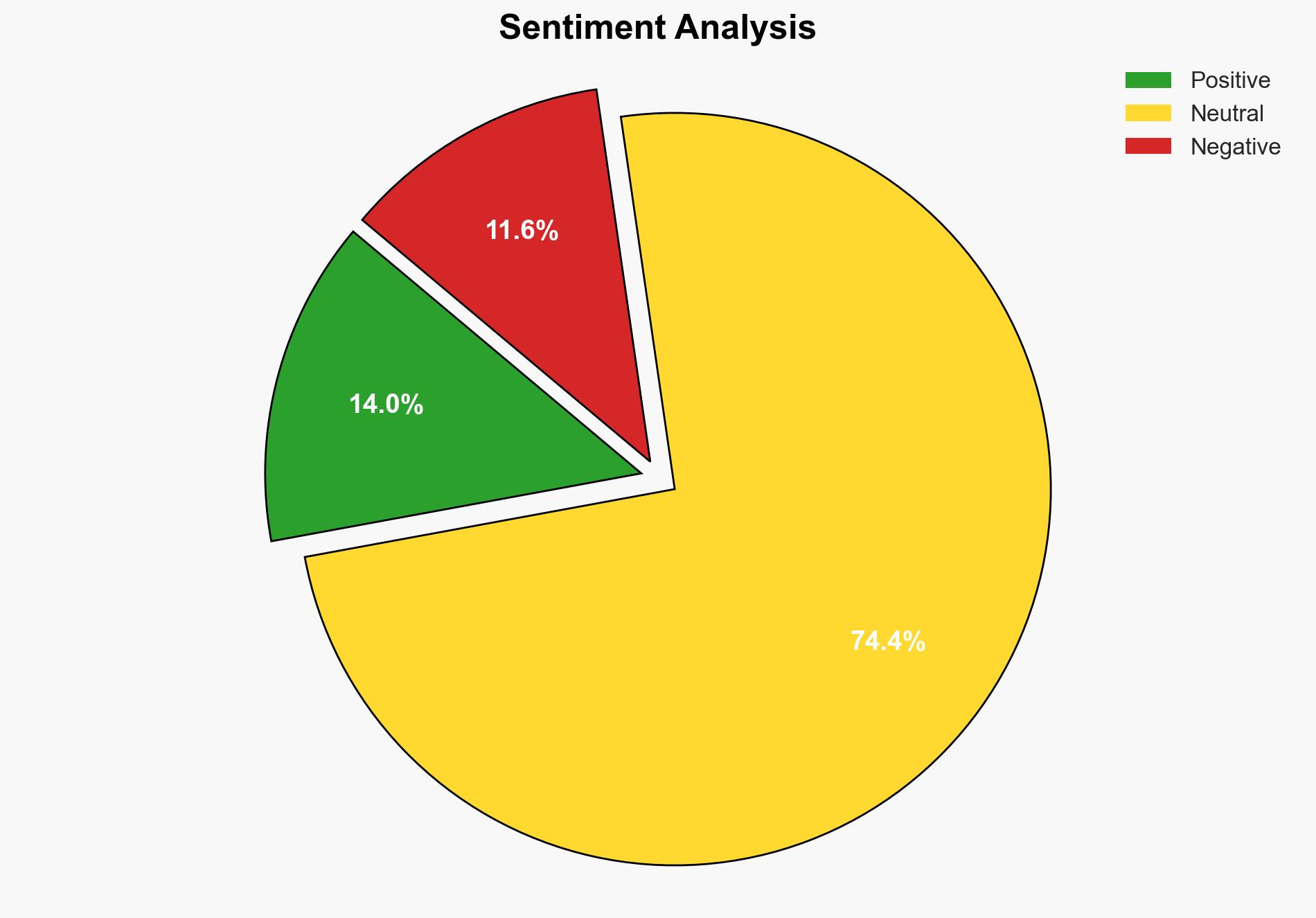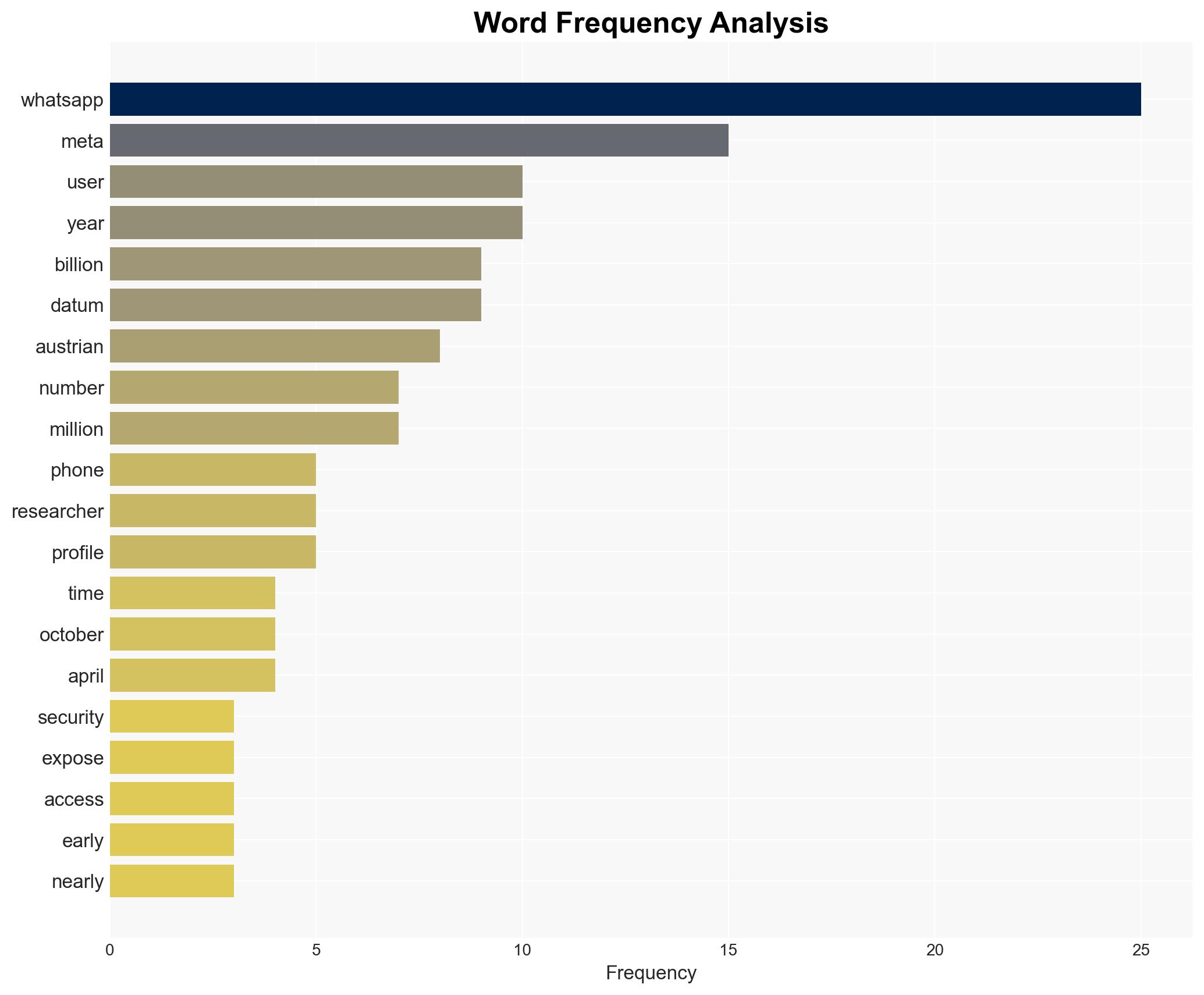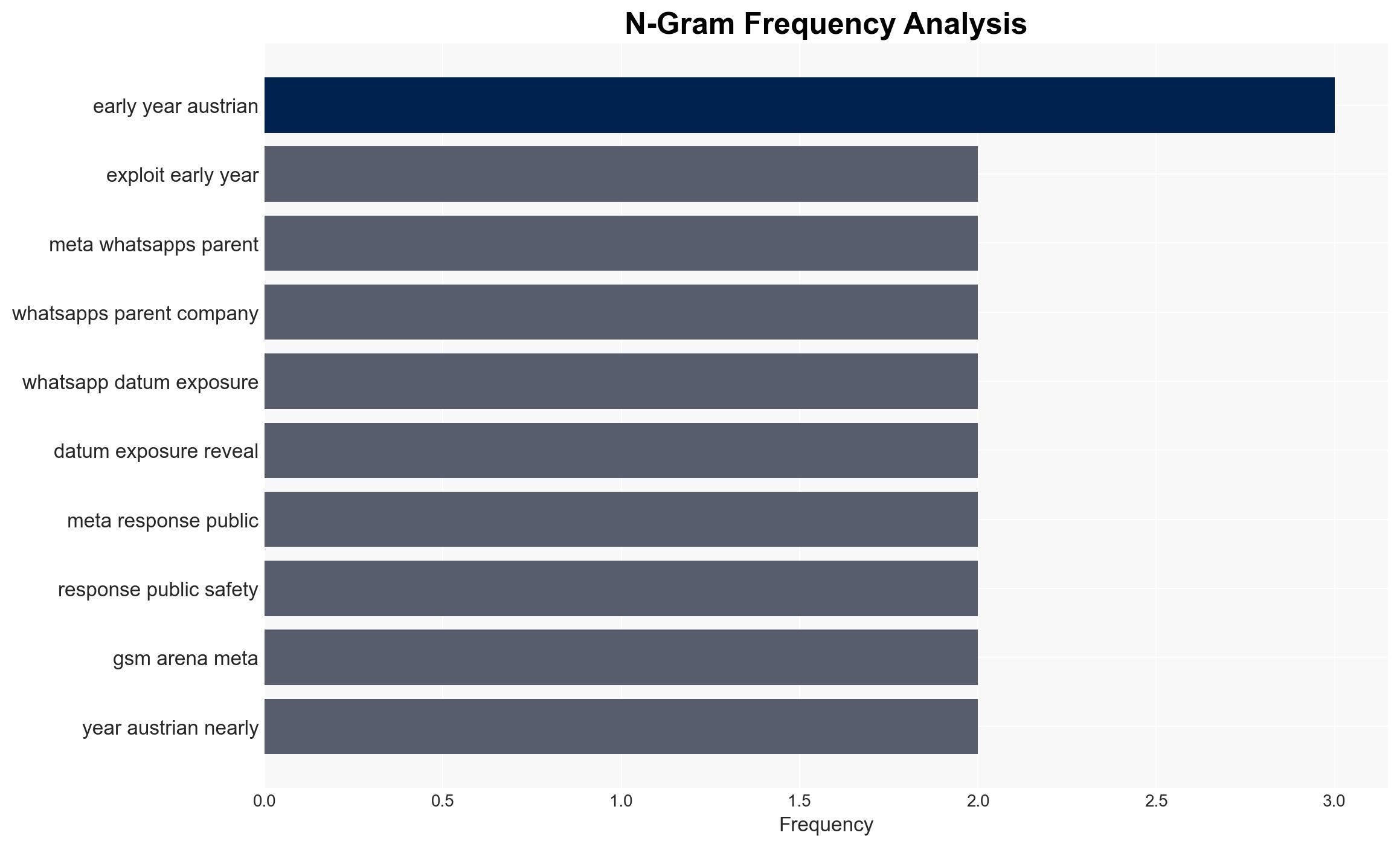WhatsApp Security Flaw Exposes 35 Billion Users’ Data From ‘Basic Publicly Available Information’ – International Business Times
Published on: 2025-11-19
AI-powered OSINT brief from verified open sources. Automated NLP signal extraction with human verification. See our Methodology and Why WorldWideWatchers.
Intelligence Report: WhatsApp Security Flaw and Data Exposure
1. BLUF (Bottom Line Up Front)
The most supported hypothesis is that the security flaw in WhatsApp, which allowed for the scraping of user data, was due to insufficient security measures and delayed response by Meta, the parent company. This resulted in a significant exposure of user data, potentially impacting billions of users. Confidence Level: Moderate. Recommended action includes immediate enhancement of security protocols and user education on privacy settings.
2. Competing Hypotheses
Hypothesis 1: The data exposure was primarily due to a technical oversight in WhatsApp’s security architecture, which was not addressed in a timely manner by Meta, leading to large-scale data scraping.
Hypothesis 2: The exposure was a result of a deliberate exploitation by malicious actors who identified and exploited a known vulnerability, possibly with insider knowledge or external assistance.
Hypothesis 1 is more likely due to the evidence of delayed response and implementation of security measures by Meta, as well as the lack of evidence pointing to insider involvement or sophisticated external exploitation.
3. Key Assumptions and Red Flags
Assumptions: It is assumed that the vulnerability was not widely known or exploited before the Austrian researcher’s report. It is also assumed that Meta’s response was not intentionally delayed.
Red Flags: The long delay in addressing the vulnerability raises questions about Meta’s internal security protocols and prioritization of user data protection. The scale of data exposure suggests potential underestimation of threat vectors by Meta.
Deception Indicators: Meta’s characterization of the exposed data as “basic publicly available information” may downplay the severity of the breach, suggesting potential minimization of the issue’s impact.
4. Implications and Strategic Risks
The exposure of WhatsApp user data poses significant risks, including increased vulnerability to phishing attacks, identity theft, and other cybercrimes. Politically, this could lead to increased regulatory scrutiny and potential penalties for Meta. Economically, the breach could result in loss of user trust and market share for WhatsApp. Informationally, the incident highlights the need for robust data protection measures in widely used communication platforms.
5. Recommendations and Outlook
- Actionable Steps: Meta should immediately enhance security protocols, including implementing stronger encryption and access controls. Conduct a comprehensive security audit and increase transparency with users regarding data protection measures.
- Best Case Scenario: Meta successfully addresses the security flaws, regains user trust, and sets a new standard for data protection in communication platforms.
- Worst Case Scenario: Continued exploitation of vulnerabilities leads to further data breaches, resulting in significant financial and reputational damage to Meta.
- Most-likely Scenario: Meta implements necessary security improvements, but faces ongoing challenges in restoring user confidence and complying with regulatory demands.
6. Key Individuals and Entities
Meta: Parent company of WhatsApp, responsible for addressing the security flaw.
Austrian Researcher: Individual who identified and reported the vulnerability, prompting Meta’s response.
7. Thematic Tags
Cybersecurity, Data Protection, User Privacy, Regulatory Compliance
Structured Analytic Techniques Applied
- Adversarial Threat Simulation: Model and simulate actions of cyber adversaries to anticipate vulnerabilities and improve resilience.
- Indicators Development: Detect and monitor behavioral or technical anomalies across systems for early threat detection.
- Bayesian Scenario Modeling: Quantify uncertainty and predict cyberattack pathways using probabilistic inference.
Explore more:
Cybersecurity Briefs ·
Daily Summary ·
Support us





